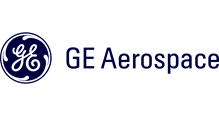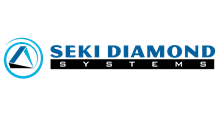
December 1 - 6, 2024
Boston, Massachusetts
Symposium Supporters
2024 MRS Fall Meeting & Exhibit
SF05.04.03
References
[1] A. Couret et al. Acta Materialia 2019.
[2] J. S. Barnard et al. Science 2006.
[3] M. Tanakal et al. Scripta Materialia 2008.
[4] G.S. Liu et al. J. Mater. Res 2011.
[5] A. Mussi et al. Phys. Chem. Minerals 2014.
[6] A. Mussi et al. Comptes Rendus Physique 2021.
[7] A. Mussi et al. Acta Materialia 2021.
[8] Z. Feng et al. COSSM 2020.
[9] O. Altingövde et al. Ultramicroscopy 2022.
[10] E. Oveisi et al. Scientific Reports 2017.
[11] J.P. Monchoux, D. Ferry. Scripta Materialia 2023.
Three-Dimensional High Temperature Deformation Mechanisms in Tial Intermetallics Determined by Electron Tomography
When and Where
Dec 3, 2024
9:30am - 9:45am
9:30am - 9:45am
Hynes, Level 2, Room 203
Presenter(s)
Co-Author(s)
Jean-Philippe Monchoux1,Alain Couret1,Guy Molénat1,Michael Musi2,Daniel Ferry3
Université de Toulouse1,Montanuniversität Leoben2,CINaM, CNRS, Université Aix-Marseille3
Abstract
Jean-Philippe Monchoux1,Alain Couret1,Guy Molénat1,Michael Musi2,Daniel Ferry3
Université de Toulouse1,Montanuniversität Leoben2,CINaM, CNRS, Université Aix-Marseille3
To identify the controlling mechanisms of alloys deformed at high temperatures, it is necessary to determine in three dimensions (3D) the relative orientation of the dislocation motion planes with respect to the Burgers vector. Hence, glide, climb and/or mixed climb mechanisms can be deduced. While conventional tilting experiments have allowed such determination for a long time [1], the development of electron tomography techniques has recently opened new perspectives for a more accurate and systematic determination of the 3D dislocation structures, from which the mechanisms can be more easily derived [2-11]. Here, we present an electron tomography approach based on the accurate alignment of tilt series, using landmark tracking methods originally developed for the life sciences in the bibliography. In particular, it will be shown that complex dislocation sub-structures in TiAl alloys deformed at 800°C can be resolved in 3D with a typical spatial resolution of 10 nm. We will also present atom probe tomography studies, which aim was to identify the interaction mechanisms of the dislocations with substitutional (tungsten) and interstitial (carbon) solutes, added to increase the specific strength of TiAl alloys. We will then show that the morphological information provided by electron tomography, coupled with the chemical information provided by atom probe tomography, leads to unique insights into the interactions between gliding and climbing dislocations with solute atoms at the atomic scale, inspiring thus new TiAl alloy designs.References
[1] A. Couret et al. Acta Materialia 2019.
[2] J. S. Barnard et al. Science 2006.
[3] M. Tanakal et al. Scripta Materialia 2008.
[4] G.S. Liu et al. J. Mater. Res 2011.
[5] A. Mussi et al. Phys. Chem. Minerals 2014.
[6] A. Mussi et al. Comptes Rendus Physique 2021.
[7] A. Mussi et al. Acta Materialia 2021.
[8] Z. Feng et al. COSSM 2020.
[9] O. Altingövde et al. Ultramicroscopy 2022.
[10] E. Oveisi et al. Scientific Reports 2017.
[11] J.P. Monchoux, D. Ferry. Scripta Materialia 2023.
Keywords
dislocations | transmission electron microscopy (TEM)
Symposium Organizers
Yoshisato Kimura, Tokyo Institute of Technology
Florian Pyczak, Helmholtz-Zentrum Hereon
Petra Spörk-Erdely, Graz University of Technology
Akane Suzuki, GE Aerospace Research
Symposium Support
Gold
GE Aerospace Research
GE Aerospace Research
Session Chairs
Martin Friak
Petra Spörk-Erdely




